In Photos: Scotland's Cave of the Dead
Sea cave
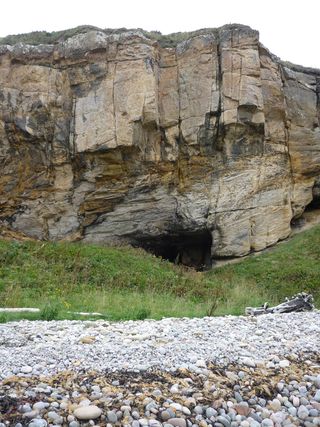
Archaeologists have created a three-dimensional digital model of a hard-to-reach sea cave on the coast at Moray in the far north of Scotland.
Excavations at the Sculptor’s Cave have shown that it was used in the late Bronze Age for a funeral practice known as excarnation, where human bodies are left to rot until the bones can be cleaned and collected.
Preparing the dead
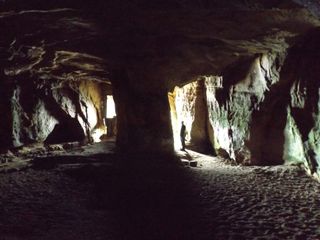
Sculptor’s Cave consists of a single large chamber scoured out of the base of a sandstone cliff by the action of the sea. It has twin entrance passaged, separated by a spine of rock.
The earliest local record of the cave is from the 1860s. Excavations in the 1920s and 1970s found numerous human remains that indicate it was a place for exposing the dead from about 1000 BC until about 400 AD.
They also found personal items from the late Bronze Age thought to have come from the dead bodies, such as hair rings and clothing pins.
Symbols all around

culptor’s Cave takes its names from the ancient symbols carved on the rock in the twin entranceways.
Researcher recognize them as symbols made by the Pictish people around 500 AD or 600 AD, well after the cave had ceased to used by people in the late Bronze Age to expose bodies after death.
Similar symbols, including a fish, a crescent and a V-shape, are found on Pictish standing stones from pre-Christian pagan times, and on Pictish stone crosses from the later Christian period. But archaeologists don’t know what they mean.
Planning required

Because access to the Sculptor’s Cave is treacherous and can only be attempted at low tide, archaeologists and scanning experts from Bradford University in the North of England decided to create a 3-dimensional digital model that can be visited by researchers and the public in safety at any time.
Feared location
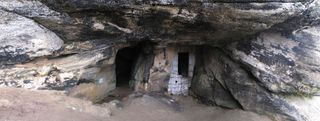
The researchers think that the Sculptor’s Cave was regarded as a terrible or gruesome place of the dead by the local peoples of the Pictish age many hundreds of years after it was used in funeral practices by late Bronze Age people.
They think the Pictish symbols could record a dire warning, a curse, or a ceremonial closure of the cave.
Archaeological evidence also shows that at least six people were decapitated inside the cave, in a single event around 250 AD, in an act of ritual human sacrifice or execution, the researchers say.
Tech and history

The researchers scanned the chambers of the cave with terrestrial laser scanning equipment, then used a method called structured light scanning to make detailed images of the Pictish stone carvings around the entrance.
This photograph shows scanning equipment beside the fish symbol carved in the eastern entrance passage.
One of many

Sculptor’s Cave is the best known of several sea-caves in the North Sea coast of Scotland at Moray where human remains from the late Bronze Age have been found by archaeologists.
The coastline is very remote, very rugged, and seldom visited.
Erosion's handiwork
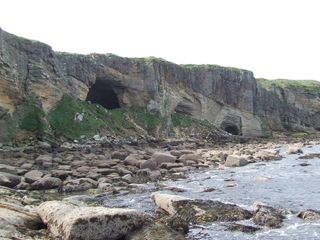
Many caves are found at the heads of small rocky bays on the Moray coast, where the sea has scoured away the base of the sandstone cliffs.
Some, like Sculptor’s Cave, have been found to contain human remains and small personal from the late Bronze Age.
Research
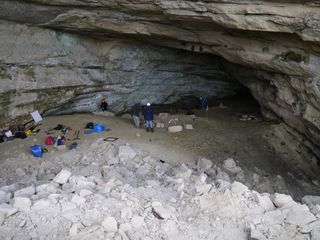
Archaeologists from the University of Bradford have been researching the sea caves in the area, including the Sculptor’s Cave, and carrying out initial excavations at other caves nearby.
Digital models
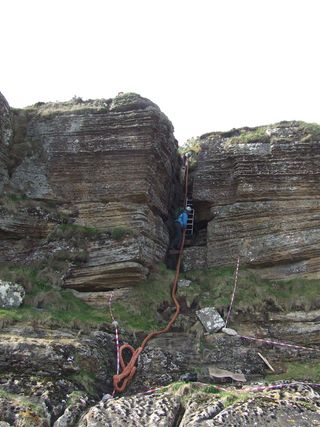
Access to the caves below the sandstone cliffs along the coast is often treacherous and only possible at low tide.
The University of Bradford researchers want their digital model of the Sculptor’s Cave at Moray to be used by researchers and members of the public who want learn more about this mysterious place, without risking life or limb in a real-life visit.
Sign up for the Live Science daily newsletter now
Get the world’s most fascinating discoveries delivered straight to your inbox.
Tom Metcalfe is a freelance journalist and regular Live Science contributor who is based in London in the United Kingdom. Tom writes mainly about science, space, archaeology, the Earth and the oceans. He has also written for the BBC, NBC News, National Geographic, Scientific American, Air & Space, and many others.
